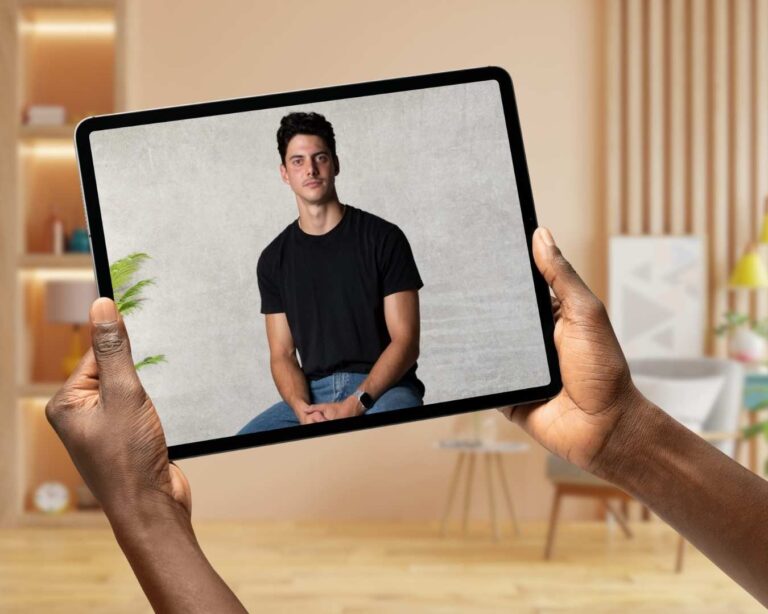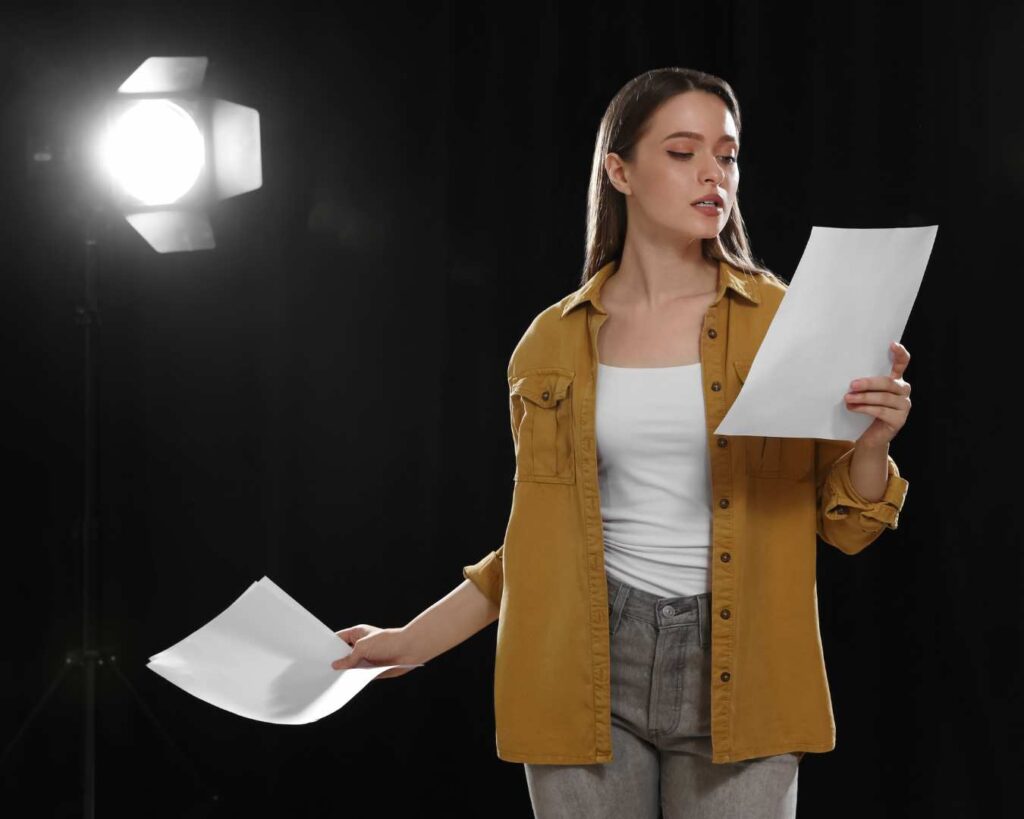Contents
While self-tapes offer a fantastic opportunity, many actors—both aspiring and experienced—still make common mistakes that could hinder their chances of landing an acting role. In this article, we’ll walk you through the 8 most common self-tape errors and provide actionable tips on how to fix them, so you can deliver the best possible performance every time.
1. Poor Lighting: Don’t Let Shadows Sabotage Your Performance
Mistake: One of the most common self-tape errors is poor lighting. Shadows, overexposure, or dark backgrounds can distract from your performance and make it hard for casting agents to see your facial expressions and emotions clearly.
Fix: Ensure your self-tape is filmed in a well-lit area, ideally with natural light or soft, diffused lighting to prevent harsh shadows. Position the light source in front of you at eye level, and avoid overhead lights that can cast unwanted shadows. If filming at home, consider investing in affordable ring lights or LED panels to achieve the best results.
2. Distracting Background: Keep the Focus on You

Mistake: A cluttered, busy, or overly distracting background can draw attention away from your performance, which is exactly the opposite of what you want in your self-tape.

Fix: Opt for a clean, neutral background that won’t distract from your performance. Plain walls, a simple backdrop, or even a softly blurred environment work best. If you’re recording at home, consider clearing the area behind you to create a tidy and unobtrusive space.
3. Poor Audio: Casting Directors Can’t Hear Your Lines
Mistake: Clear audio is essential for self-tapes, yet many actors forget to check their sound quality. Poor audio can be just as detrimental as bad video quality, as casting directors won’t be able to hear your lines or emotions clearly.
Fix: Use a high-quality microphone to record your self-tape, or make sure your device’s built-in microphone is close enough to capture clear sound. If filming with a smartphone, test the audio before recording to ensure it’s clear and free of background noise. Alternatively, you can record your lines separately and sync them later during editing.

4. Overacting or Underacting: Finding the Right Balance
Mistake: Overacting or underacting can lead to a missed opportunity, as it’s easy to misread the tone of the scene. Casting directors need to see the range of your performance, but you want to avoid extremes that don’t fit the material.
Fix: Stay true to the character and script. Practice the scene to find a natural rhythm and level of intensity. It’s important to appear genuine and grounded in your performance, so make sure you’re not exaggerating emotions or holding back when the scene demands more.
5. Bad Framing: Your Performance Is Too Far Away or Too Close
Mistake: Incorrect framing can make your self-tape look unprofessional or make it difficult for casting directors to connect with your performance. Whether you’re too far from the camera or too close, poor framing can distract from your expressions and body language.
Fix: Position the camera at eye level, and make sure your face is clearly visible within the frame. A medium shot (waist-up) is typically the best option for most self-tapes. Ensure there’s enough space above your head and around your body to show your gestures without cutting off any important part of your performance.
6. Reading the Lines off-Screen: Eye Contact is Key
Mistake: One of the easiest mistakes to make during a self-tape is reading your lines off-screen. Casting directors want to see that you’re engaging with the material and your scene partner (if applicable), so avoid glancing off to read your lines.
Fix: Print your lines and place them just below the camera’s view or use a teleprompter app to keep your focus on the camera. This ensures your eye contact remains natural and engaging, while still allowing you to reference your lines when needed.
7. Not Following the Instructions: Casting Advice You Can’t Ignore

Mistake: Many actors forget to carefully read the casting brief or ignore the specific instructions given for the self-tape. This can lead to submitting a self-tape that doesn’t meet the casting director’s expectations.

Fix: Always read the instructions carefully before filming. Ensure you’re performing the correct scene, following any specific directions (like tone, pace, or emotional state), and adhering to any technical specifications (such as video format, file size, or duration). Casting agents appreciate actors who can follow directions to the letter.
8. Inconsistent Performance: Don’t Rush Your Take
Mistake: Rushed or inconsistent performances are common, especially if you’re recording multiple takes. A lack of consistency in your tone, pacing, or delivery can make it hard for casting directors to gauge your range.
Fix: Take your time to warm up before you record, and do multiple takes if necessary. Don’t rush through the scene—take breaks between takes to reset your focus. Choose the best version of your performance that feels genuine, consistent, and true to the character.
Perfect Your Self-Tape to Land the Role
Self-tapes are an essential part of the acting process, and perfecting them can make a significant difference in landing your next role. By avoiding these common mistakes and following these self-tape tips, you’ll ensure that your submission stands out to casting directors.
Whether you’re an aspiring actor just starting out or an experienced professional looking to refine your technique, these tips can help you improve your self-tape quality and increase your chances of success. Remember, a professional self-tape shows your commitment and talent—so invest the time to make it great.
Need more casting advice or help with your self-tape? Get in touch with us today to learn more about how we can support you through your acting journey.







